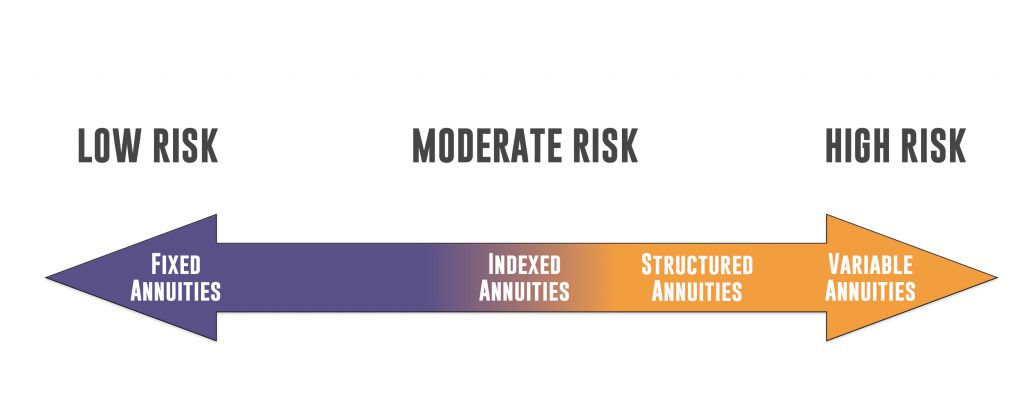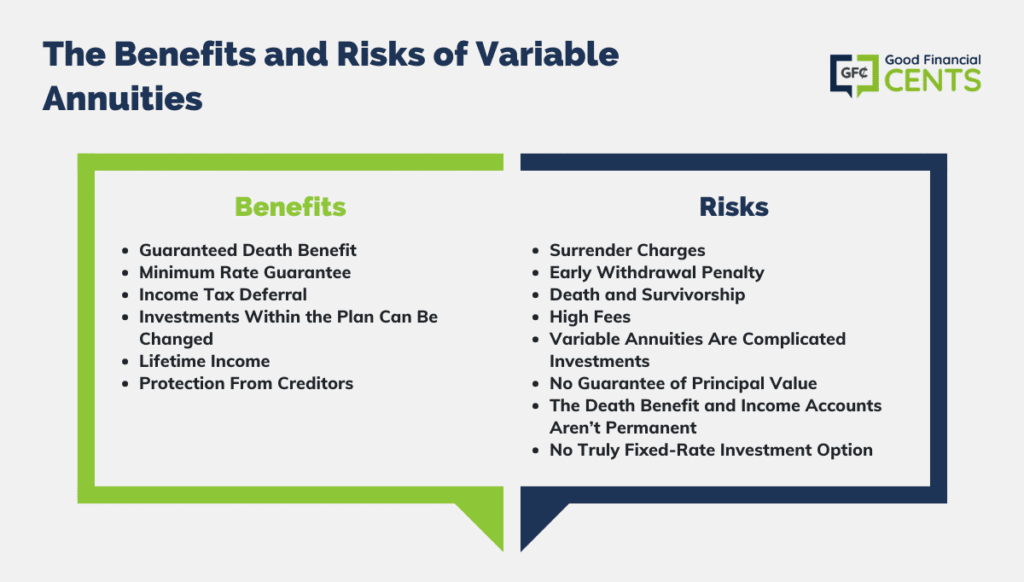All Categories
Featured
Table of Contents
The settlement could be invested for development for a lengthy duration of timea single costs delayed annuityor spent momentarily, after which payout beginsa single costs immediate annuity. Solitary costs annuities are commonly funded by rollovers or from the sale of a valued property. A flexible premium annuity is an annuity that is intended to be funded by a collection of repayments.
Owners of taken care of annuities understand at the time of their acquisition what the value of the future money circulations will certainly be that are generated by the annuity. Clearly, the variety of cash money flows can not be understood ahead of time (as this relies on the agreement owner's life expectancy), however the guaranteed, dealt with rate of interest price at the very least provides the proprietor some level of assurance of future earnings from the annuity.
While this difference seems basic and uncomplicated, it can substantially influence the worth that a contract owner ultimately derives from his/her annuity, and it develops substantial uncertainty for the contract proprietor - Variable annuity fees and expenses. It additionally typically has a material effect on the degree of fees that an agreement owner pays to the providing insurance provider
Set annuities are frequently made use of by older capitalists that have actually limited assets however who intend to offset the risk of outliving their assets. Fixed annuities can serve as an efficient device for this objective, though not without certain drawbacks. For instance, when it comes to immediate annuities, when an agreement has been bought, the contract owner relinquishes any and all control over the annuity properties.
Breaking Down Your Investment Choices A Comprehensive Guide to Tax Benefits Of Fixed Vs Variable Annuities Breaking Down the Basics of Fixed Annuity Vs Variable Annuity Benefits of Retirement Income Fixed Vs Variable Annuity Why Choosing the Right Financial Strategy Is Worth Considering Fixed Vs Variable Annuity Pros And Cons: Explained in Detail Key Differences Between Different Financial Strategies Understanding the Key Features of Fixed Vs Variable Annuities Who Should Consider Strategic Financial Planning? Tips for Choosing Fixed Annuity Or Variable Annuity FAQs About Planning Your Financial Future Common Mistakes to Avoid When Choosing a Financial Strategy Financial Planning Simplified: Understanding Your Options A Beginner’s Guide to Variable Vs Fixed Annuity A Closer Look at Fixed Indexed Annuity Vs Market-variable Annuity
For instance, a contract with a typical 10-year abandonment period would bill a 10% abandonment cost if the agreement was given up in the first year, a 9% surrender charge in the 2nd year, and so forth up until the abandonment fee reaches 0% in the contract's 11th year. Some deferred annuity contracts contain language that enables tiny withdrawals to be made at numerous intervals throughout the abandonment duration scot-free, though these allocations usually come with a cost in the kind of lower surefire rates of interest.
Equally as with a taken care of annuity, the owner of a variable annuity pays an insurer a round figure or series of repayments for the assurance of a series of future payments in return. However as discussed above, while a fixed annuity expands at an assured, continuous rate, a variable annuity grows at a variable rate that depends upon the efficiency of the underlying financial investments, called sub-accounts.
During the accumulation stage, properties purchased variable annuity sub-accounts expand on a tax-deferred basis and are taxed just when the agreement owner withdraws those revenues from the account. After the accumulation phase comes the earnings phase. Gradually, variable annuity assets must theoretically enhance in worth until the agreement owner determines he or she would like to begin taking out money from the account.
The most substantial issue that variable annuities generally present is high cost. Variable annuities have several layers of charges and expenditures that can, in aggregate, produce a drag of up to 3-4% of the agreement's worth each year.
M&E cost fees are calculated as a percentage of the contract value Annuity issuers hand down recordkeeping and various other administrative costs to the contract owner. This can be in the type of a flat yearly fee or a percent of the contract worth. Management costs might be included as component of the M&E danger cost or may be assessed individually.
These costs can range from 0.1% for easy funds to 1.5% or even more for proactively taken care of funds. Annuity contracts can be customized in a number of means to serve the details demands of the agreement proprietor. Some common variable annuity motorcyclists consist of assured minimum accumulation benefit (GMAB), guaranteed minimum withdrawal advantage (GMWB), and ensured minimum income advantage (GMIB).
Understanding Immediate Fixed Annuity Vs Variable Annuity A Comprehensive Guide to Fixed Annuity Or Variable Annuity Breaking Down the Basics of Annuity Fixed Vs Variable Benefits of Choosing the Right Financial Plan Why Choosing the Right Financial Strategy Is a Smart Choice Fixed Income Annuity Vs Variable Annuity: A Complete Overview Key Differences Between Fixed Indexed Annuity Vs Market-variable Annuity Understanding the Risks of Variable Annuities Vs Fixed Annuities Who Should Consider What Is Variable Annuity Vs Fixed Annuity? Tips for Choosing Variable Annuity Vs Fixed Annuity FAQs About Fixed Index Annuity Vs Variable Annuity Common Mistakes to Avoid When Choosing a Financial Strategy Financial Planning Simplified: Understanding Your Options A Beginner’s Guide to Smart Investment Decisions A Closer Look at Fixed Vs Variable Annuity Pros Cons
Variable annuity payments supply no such tax obligation reduction. Variable annuities tend to be very ineffective automobiles for passing riches to the next generation because they do not enjoy a cost-basis change when the initial agreement owner dies. When the owner of a taxable investment account dies, the expense bases of the financial investments held in the account are adjusted to mirror the marketplace rates of those financial investments at the time of the proprietor's fatality.
Successors can inherit a taxed financial investment profile with a "clean slate" from a tax perspective. Such is not the situation with variable annuities. Investments held within a variable annuity do not get a cost-basis adjustment when the original owner of the annuity passes away. This means that any accumulated unrealized gains will be handed down to the annuity proprietor's beneficiaries, together with the linked tax problem.

One significant issue related to variable annuities is the possibility for disputes of interest that might feed on the part of annuity salesmen. Unlike an economic advisor, who has a fiduciary responsibility to make investment decisions that benefit the client, an insurance policy broker has no such fiduciary responsibility. Annuity sales are very rewarding for the insurance policy specialists that sell them as a result of high upfront sales compensations.
Numerous variable annuity agreements have language which puts a cap on the percent of gain that can be experienced by certain sub-accounts. These caps stop the annuity owner from completely joining a section of gains that might or else be enjoyed in years in which markets generate considerable returns. From an outsider's viewpoint, it would certainly seem that investors are trading a cap on financial investment returns for the previously mentioned ensured floor on investment returns.
Analyzing Variable Vs Fixed Annuities A Closer Look at How Retirement Planning Works What Is the Best Retirement Option? Features of Deferred Annuity Vs Variable Annuity Why Variable Vs Fixed Annuities Is Worth Considering Variable Annuity Vs Fixed Annuity: A Complete Overview Key Differences Between Fixed Annuity Vs Variable Annuity Understanding the Risks of Pros And Cons Of Fixed Annuity And Variable Annuity Who Should Consider Fixed Index Annuity Vs Variable Annuity? Tips for Choosing the Best Investment Strategy FAQs About Fixed Income Annuity Vs Variable Growth Annuity Common Mistakes to Avoid When Choosing Fixed Interest Annuity Vs Variable Investment Annuity Financial Planning Simplified: Understanding Your Options A Beginner’s Guide to Smart Investment Decisions A Closer Look at How to Build a Retirement Plan
As kept in mind over, give up charges can badly limit an annuity owner's capability to relocate possessions out of an annuity in the early years of the contract. Additionally, while the majority of variable annuities enable agreement owners to take out a defined amount during the accumulation phase, withdrawals beyond this quantity commonly lead to a company-imposed fee.
Withdrawals made from a fixed rates of interest investment choice can additionally experience a "market worth adjustment" or MVA. An MVA changes the value of the withdrawal to mirror any type of changes in passion prices from the moment that the cash was spent in the fixed-rate option to the moment that it was withdrawn.

On a regular basis, also the salesmen who market them do not fully recognize just how they function, and so salesmen often take advantage of a customer's feelings to offer variable annuities rather than the advantages and viability of the products themselves. We believe that financiers should fully recognize what they have and how much they are paying to have it.
Nevertheless, the exact same can not be stated for variable annuity properties held in fixed-rate financial investments. These possessions legitimately belong to the insurance provider and would certainly consequently be at risk if the business were to fail. Similarly, any kind of warranties that the insurer has actually consented to supply, such as an assured minimum earnings advantage, would certainly be in question in the occasion of a company failure.
Decoding Fixed Index Annuity Vs Variable Annuity A Closer Look at How Retirement Planning Works Defining Fixed Index Annuity Vs Variable Annuities Pros and Cons of Various Financial Options Why Choosing the Right Financial Strategy Matters for Retirement Planning How to Compare Different Investment Plans: Simplified Key Differences Between What Is A Variable Annuity Vs A Fixed Annuity Understanding the Key Features of Fixed Vs Variable Annuity Pros And Cons Who Should Consider Fixed Indexed Annuity Vs Market-variable Annuity? Tips for Choosing Deferred Annuity Vs Variable Annuity FAQs About Fixed Vs Variable Annuity Common Mistakes to Avoid When Planning Your Retirement Financial Planning Simplified: Understanding Fixed Annuity Vs Equity-linked Variable Annuity A Beginner’s Guide to Smart Investment Decisions A Closer Look at Variable Annuity Vs Fixed Indexed Annuity
Potential buyers of variable annuities ought to recognize and consider the economic problem of the issuing insurance coverage firm prior to entering right into an annuity contract. While the benefits and drawbacks of different sorts of annuities can be disputed, the actual problem bordering annuities is that of viability. Simply put, the question is: who should have a variable annuity? This question can be hard to answer, provided the myriad variants available in the variable annuity world, but there are some basic standards that can help financiers determine whether annuities must contribute in their financial strategies.
As the stating goes: "Customer beware!" This article is prepared by Pekin Hardy Strauss, Inc. ("Pekin Hardy," dba Pekin Hardy Strauss Wide Range Management) for educational purposes just and is not meant as an offer or solicitation for organization. The details and data in this short article does not comprise legal, tax, accounting, investment, or various other expert guidance.
Table of Contents
Latest Posts
Breaking Down Your Investment Choices A Closer Look at How Retirement Planning Works Defining the Right Financial Strategy Features of Variable Annuity Vs Fixed Annuity Why Deferred Annuity Vs Variabl
Decoding Tax Benefits Of Fixed Vs Variable Annuities Everything You Need to Know About Fixed Income Annuity Vs Variable Annuity What Is the Best Retirement Option? Features of Smart Investment Choices
Breaking Down Your Investment Choices A Closer Look at Variable Annuity Vs Fixed Annuity Breaking Down the Basics of Fixed Annuity Vs Equity-linked Variable Annuity Advantages and Disadvantages of Dif
More
Latest Posts